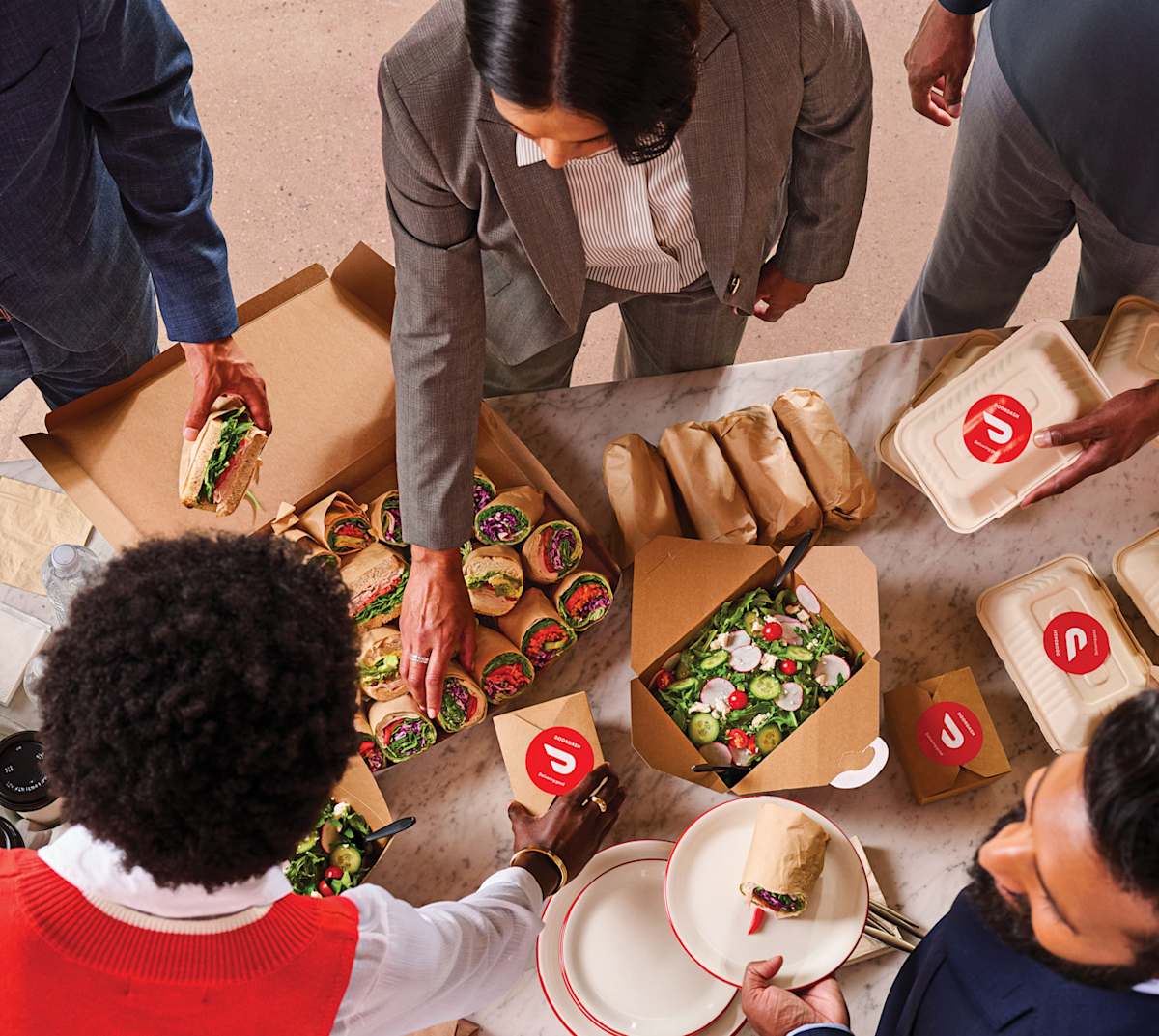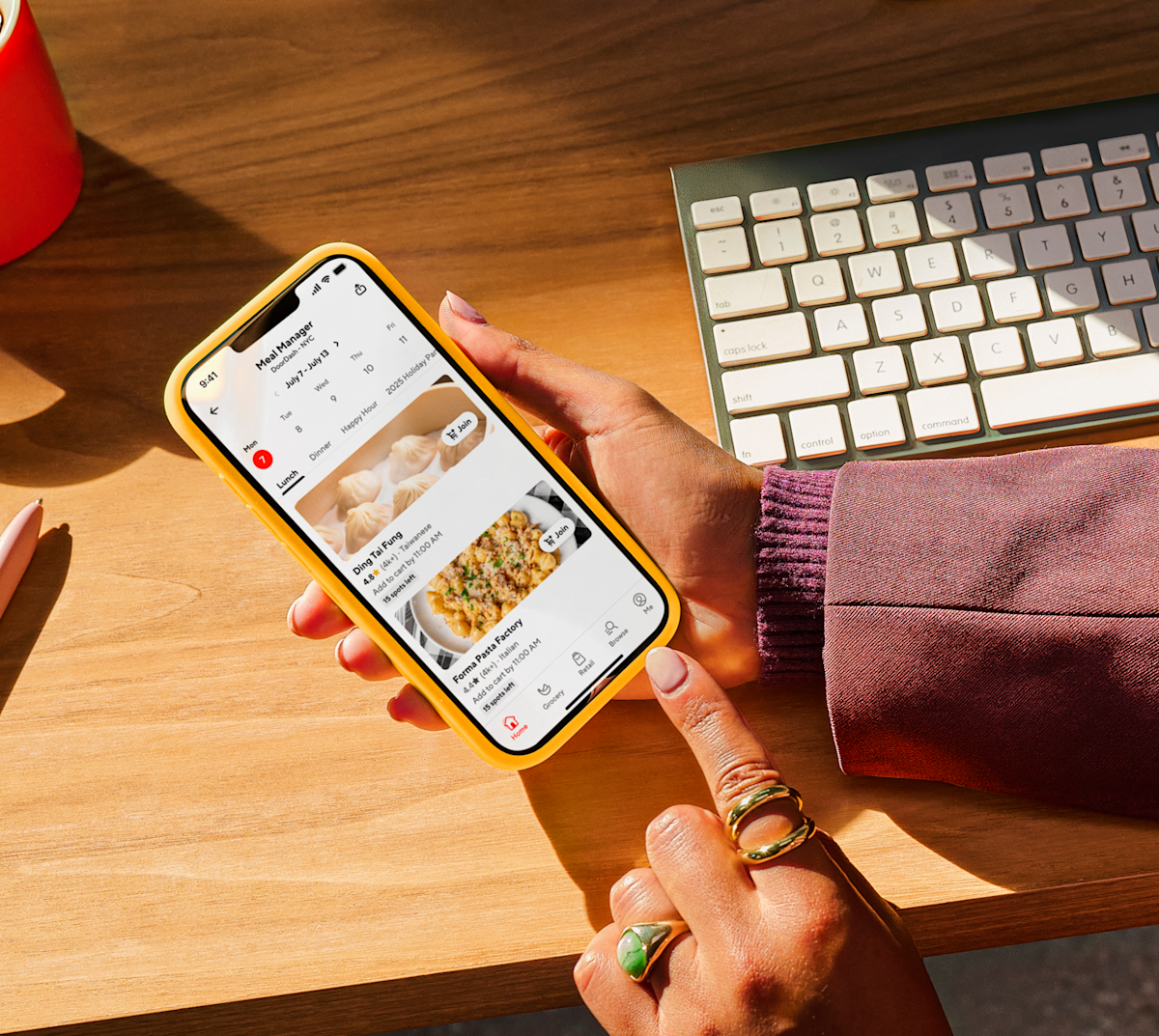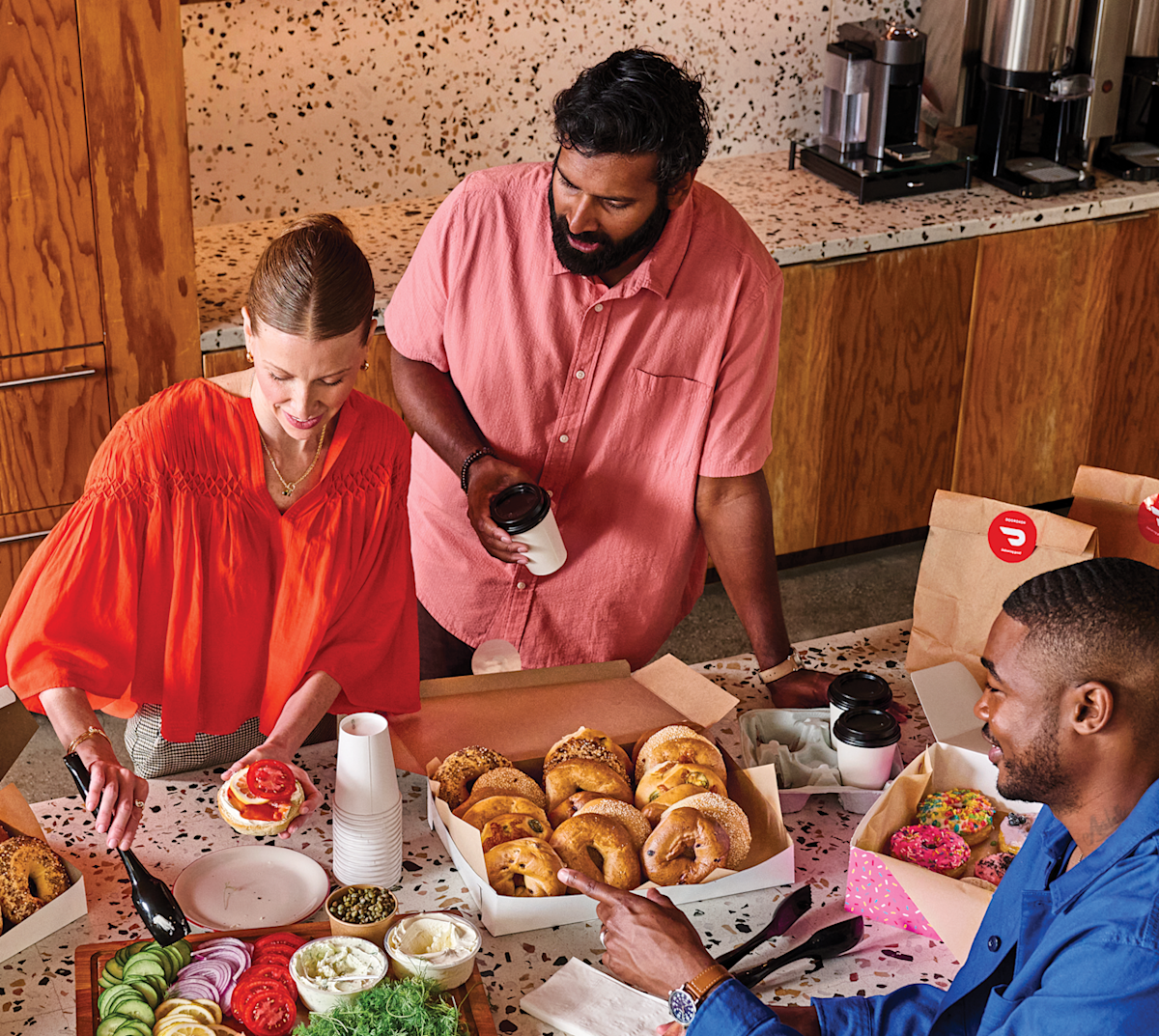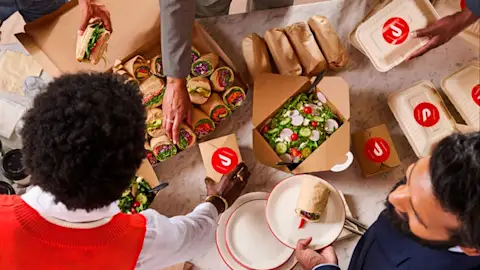Having your meals covered at work? It's one of the perks employees love most. Whether it's lunch during a packed day or small bites and drinks after hours with colleagues, meal perks go a long way in making employees feel supported and appreciated.
For the most part, meal stipends — fixed daily or per-meal allowances for work-related meals — are the format many of us know best. But let's be honest — we've all been there: digging through inboxes for receipts, screenshotting food delivery orders, or second-guessing whether something's actually eligible for reimbursement.
That's where employee meal programs like DoorDash for Business make a difference. It's a service built for today's hybrid and remote teams, offering a simpler, more flexible experience for both employees and admins. With streamlined administration, clearer guardrails, and 500,000+ merchants available on Marketplace, it saves everyone time and provides meal options that fit every schedule and location.
So, how does DoorDash for Business actually compare to traditional stipends? Let's break it down.
The pros and cons of meal stipends
When it comes to meal allowance models, meal stipends are most often a familiar and straightforward solution. Employees pay out of pocket, submit their receipts, and get reimbursed on a payroll timeline. It's simple, and for many teams — especially smaller ones — it gets the job done without much oversight. Be it a deli sandwich nearby or pho delivery from their favorite spot across town, employees can choose whatever suits their preference that day.
But while stipends may be suitable for smaller teams, they come with a few notable caveats:
Time consuming: Requires manual reimbursement that adds unnecessary steps to everyone's day. Especially for admins who spend time reviewing submissions and chasing down missing details, this is time that could be spent on higher-impact work.
Upfront costs: Covering team lunches or client dinners for a week — especially during travel — can put a financial and social strain on employees awaiting reimbursement.
Policy ambiguity: When rules aren't easy to find or clearly communicated, employees are left guessing. One person might order a coffee and snack thinking it’s covered, while another avoids using the stipend altogether for fear of doing it wrong.
Compliance risks: With remote teams spread across states or countries, legal and tax policies can differ by location. Admins have to navigate different jurisdictions and keep up with local tax laws and labor regulations to avoid potential audit risks.
Lacks integration with food delivery platforms: Without a connected system, employees have to juggle their own food logistics during busy work days. There's no central place to track orders or spending, and no way to streamline delivery for those who rely on convenience.
The takeaway? Meal stipends can be a workable solution in certain scenarios, but they often fall short when it comes to the structure, flexibility, and scalability that growing and hybrid teams require.

Why meal benefit programs offer more
Employee meal programs solve for the headaches stipends can't by offering an end-to-end solution that’s built for flexibility, transparency, and ease. Instead of relying on reimbursements and guesswork, they give both employees and admins a more structured (and less stressful) way to share meals at work.
Here's what sets corporate meal plans apart:
Flexibility: Perfect for remote teams and event-based needs, admins can adjust maximum budgets based on region or office location. Ex: a lunch in New York City might require a different budget threshold than one in Omaha.
Better policy controls: Customize everything from spending caps to delivery radius and order windows. Limit usage to lunch hours, allow dinners for teams working late on a launch, or block alcohol delivery by default to stay compliant.
Built-in scheduling: Set up recurring or one-off meals in advance with built-in parameters. Be it a weekly team lunch or a catered new hire welcome, you can ensure meals happen when and how you intend.
Data insights: Get a clear picture of how meals are being used. Track spending, spot peak ordering times, and uncover trends like upticks in client lunches or gift cards tied to prospecting.
Streamlined expense reporting: Say goodbye to chasing down receipts. Integrated dashboards automatically track spending and simplify the handoff to finance.
Unlike stipends, employee meal programs offer a more equitable, efficient, and scalable approach — one that supports a growing workforce without adding administrative overhead.
DoorDash for Business: More than just employee meals
With DoorDash for Business, companies get more than just meal coverage — they unlock a full suite of tools that make it easy to support different meal scenarios across remote, hybrid, and in-office teams.
Whether it's sending a lunch treat to someone working from home or coordinating food for a company-wide event, DoorDash for Business delivers far more flexibility than a traditional meal stipend. Here's how:
Vouchers: One-time, personalized meals that are easy to track and hard to misuse — perfect for spot rewards or lunch and learns.
Meal credits: Recurring meal budgets with built-in guardrails, auto-expiry, and easy allocation.
Gift cards: Ideal for celebrating wins, birthdays, or just saying thanks — while nudging more employees to engage with your employee meal program .
Group orders: Groups can add individual meals to a shared cart for office lunches, without the back and forth of coordination.
Catering: Choose from large-format trays or individually packaged meals perfect for all-hands meetings, onboarding sessions, or offsites.
Take it from KIPP Public Schools Northern California (KIPP NorCal) who saw immediate improvements when they shifted away from a traditional meal coverage model to DoorDash for Business. With the platform in place, they:
Gained access to a broader range of restaurants, without running over budget.
Spent less time manually reviewing and reconciling expenses.
Created a smoother experience for both staff and administrators.
Set up recurring, scheduled meal programs that matched their events and team needs.
"DoorDash for Business is great for keeping track of invoices and budgets. It's user-friendly, everything's in one place and centralized, and the solution is inexpensive."
The right program delivers real value
The bottom line: meal stipends can work for smaller teams or single-location offices, but they often come with hidden challenges like extra admin work, unclear policies, and uneven employee experiences.
Employee meal programs like DoorDash for Business offer a smarter solution. With built-in controls, flexible options, and time-saving tools, it's designed to meet the needs of modern teams without creating more work behind the scenes.
Ready to simplify how your team eats at work? Learn how DoorDash for Business makes ordering and expensing meals easier for everyone.




